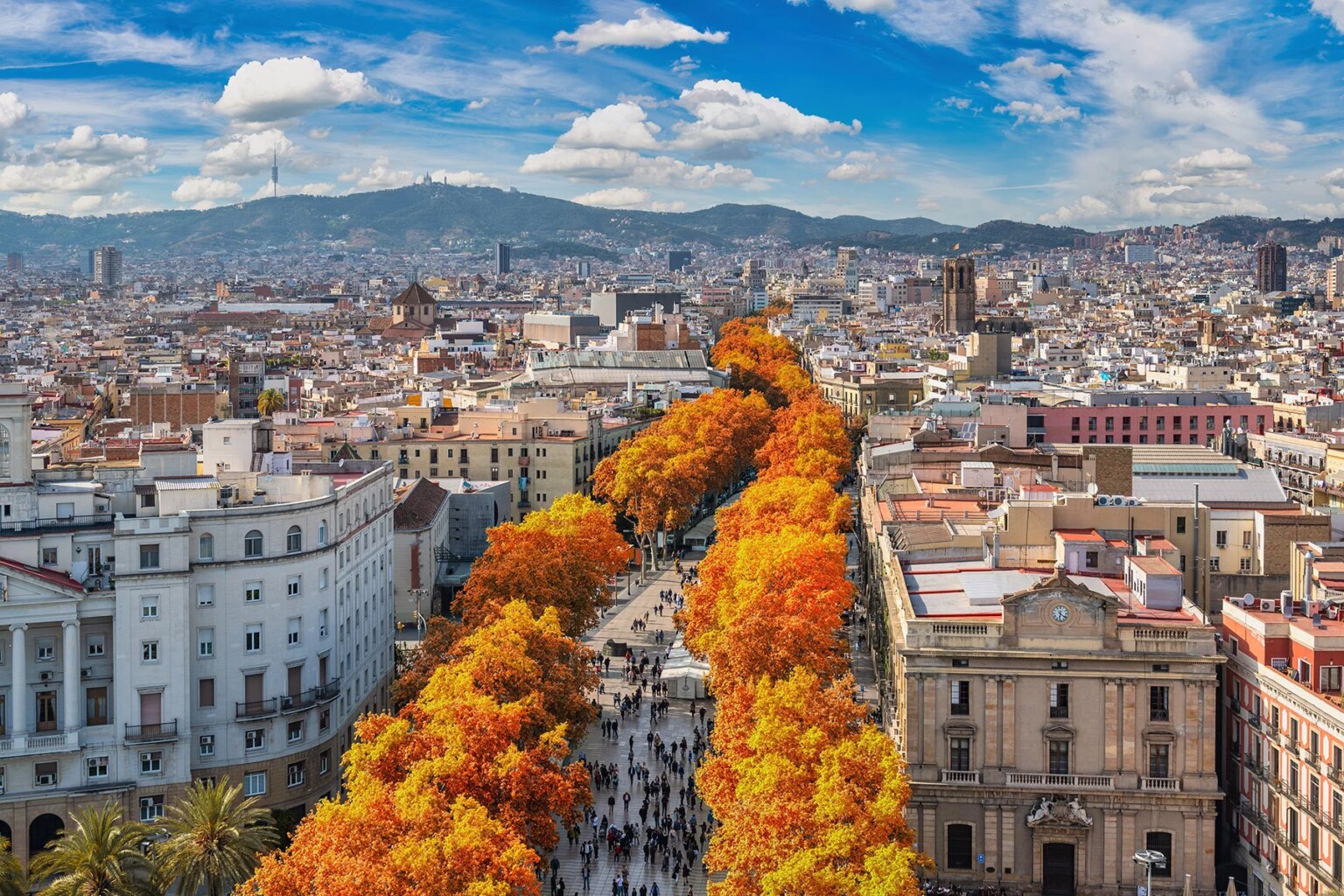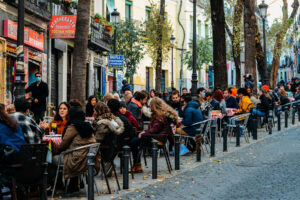Welcome to Spain! As you get settled into your new home country, check out this brief introduction, with summaries and facts about Spanish history, the population and people, the geography, economy, and government.
Let’s dive straight in:
A brief background of Spanish history
Spain’s powerful world empire of the 16th and 17th centuries ultimately yielded command of the seas to England. Subsequent failure to embrace the mercantile and industrial revolutions caused the country to fall behind Britain, France, and Germany in economic and political power.
Spain remained neutral in World Wars I and II but suffered through a devastating civil war (1936-39). A peaceful transition to democracy following the death of Dictator Francisco Franco in 1975 and rapid economic modernization gave Spain a dynamic and rapidly growing economy and made it a global champion of freedom and human rights.
The government’s major focus for the immediate future will be on measures to reverse the severe economic recession that started in mid-2008, posting three straight years of GDP growth above the EU average. Unemployment has fallen, but remains especially high among youth. Spain is the Eurozone’s fourth-largest economy.
Spain joined the European Union (EU) on 1 January 1986 and participated in the introduction of the Euro (EUR) in a two-phased approach in 1999 (accounting phase) and 2002 (monetary phase) to replace the Spanish Peseta (ESP).
In 1982 Spain joined NATO. Spain is also a member country of the Schengen Area in which border controls with other Schengen members have been eliminated while at the same time those with non-Schengen countries have been strengthened.
In October 2017, the Catalan regional government conducted an illegal independence referendum and declared independence from Madrid. In response, the Spanish Government partially suspended Catalonia’s autonomy and the international community has not recognized Catalonia’s unilateral declaration of independence.
Spanish people and society
Noun: Spaniard(s)
Adjective: Spanish
Population: 48,958,159 (July 2017 est.)
Ethnic groups: Composite of Mediterranean and Nordic types.
Religions: Roman Catholic 67.8%, atheist 9.1%, other 2.2%, non-believer 18.4%, unspecified 2.5% (2016 est.)
Languages: Castilian Spanish 74%; Catalan 17%; Galician 7%; Basque 2%; Aranese along with Catalan, <5,000 speakers)
N.B. Catalan is an official language in Catalonia, the Balearic Islands and the Valencian Community where it is known as Valencian. In the northwest corner of Catalonia (Vall d’Aran), Aranese is an official language along with Catalan. Galician is an official language in Galicia, and Basque is an official language in the Basque Country.
Age structure (2017 est.):
- 0-14 years: 15.38% (male 3,872,763/female 3,656,549);
- 15-24 years: 9.58% (male 2,424,352/female 2,267,429);
- 25-54 years: 44.91% (male 11,214,102/female 10,775,039);
- 55-64 years: 12.14% (male 2,899,088/female 3,044,111);
- 65 years and over: 17.98% (male 3,763,989/female 5,040,737)
Median age: 42.7 years (male 41.5 years / female 43.9 years) (2017 est.)
Life expectancy at birth: 81.8 years (male 78.8 years / female 84.9 years) (2017 est.)
Literacy: 98.3% (male 98.8%/ female 97.7%) (2017 est.)
Read more about language schools in Spain.
Spanish capital and urban population
The capital city of Spain is Madrid, which is also the largest city by population, with 6.497 million people. Additional major cities include:
- Barcelona: 5.494 million
- Valencia: 830,000 (2018)
- Sevilla: 693,878
- Zaragoza: 664,953
- Málaga: 569,130 (2015)
Spanish geography at a glance
Spain is in Southwestern Europe, bordering the Mediterranean Sea, North Atlantic Ocean, Bay of Biscay, and Pyrenees Mountains at the southwest of France.

Area: 505,370 sq km (Land: 498,980 sq km; Water: 6,390 sq km, less than 2%)
Coastline: 4,964 km
Climate: Temperate; clear, hot summers in interior, more moderate and cloudy along coast; cloudy, cold winters in interior, partly cloudy and cool along coast.
Terrain: Large, flat to dissected plateau surrounded by rugged hills; Pyrenees Mountains in the north.
Highest and Lowest points in Spain:
Lowest point: Atlantic Ocean at 0 m
Highest point: Pico de Teide on the Canary Island of Tenerife at 3,718 m
Natural resources: Coal, lignite, iron ore, copper, lead, zinc, uranium, tungsten, mercury, pyrites, magnesite, fluorspar, gypsum, sepiolite, kaolin, potash, hydropower, arable land.
A snapshot of the Spanish economy
GDP: $1.774 trillion (2017 est.)
GDP per capita: $38,300 (2017 est.)
Agricultural Products: Grain, vegetables, olives, wine grapes, sugar beets, citrus; beef, pork, poultry, dairy products; fish.
Industries: Textiles and apparel (including footwear), food and beverages, metals and metal manufactures, chemicals, shipbuilding, automobiles, machine tools, tourism, clay and refractory products, footwear, pharmaceuticals, medical equipment.
Unemployment: 17.1% (2017 est.)
Population Below the Poverty Line: 21.1% (2012 est.)
Imports: $333.4 billion (2017 est.)
Exports: $301.5 billion (2017 est.)
A brief summary of Spanish economy
After a prolonged recession that began in 2008 in the wake of the global financial crisis, Spain marked the fourth full year of positive economic growth in 2017, with economic activity surpassing its pre-crisis peak, largely because of increased private consumption.
The financial crisis of 2008 broke 16 consecutive years of economic growth for Spain, leading to an economic contraction that lasted until late 2013. In that year, the government successfully shored up its struggling banking sector – heavily exposed to the collapse of Spain’s real estate boom – with the help of an EU-funded restructuring and recapitalization program.
Until 2014, contraction in bank lending, fiscal austerity, and high unemployment constrained domestic consumption and investment. The unemployment rate rose from a low of about 8% in 2007 to more than 26% in 2013, but labor reforms prompted a modest reduction to 16.4% in 2017.
High unemployment strained Spain’s public finances, as spending on social benefits increased while tax revenues fell. Spain’s budget deficit peaked at 11.4% of GDP in 2010, but Spain gradually reduced the deficit to about 3.3% of GDP in 2017. Public debt has increased substantially – from 60.1% of GDP in 2010 to nearly 96.7% in 2017.

Strong export growth helped bring Spain’s current account into surplus in 2013 for the first time since 1986 and sustain Spain’s economic growth. Increasing labor productivity and an internal devaluation resulting from moderating labor costs and lower inflation have improved Spain’s export competitiveness and generated foreign investor interest in the economy, restoring FDI flows.
In 2017, the Spanish Government’s minority status constrained its ability to implement controversial labor, pension, health care, tax, and education reforms. The European Commission expects the government to meet its 2017 budget deficit target and anticipates that expected economic growth in 2018 will help the government meet its deficit target.
Spain’s borrowing costs are dramatically lower since their peak in mid-2012, and increased economic activity has generated a modest level of inflation, at 2% in 2017.
Spanish government
Spain is governed as a parliamentary constitutional monarchy. The chief of state is King Felipe VI (since 19 June 2014), and the monarchy is hereditary, with the heir apparent being Princess Leonor, Princess of Asturias (daughter of the monarch, born 31 October 2005). The parliament was established by the Constitution of 1978. The government is comprised of a Prime Minister (currently Pedro Sánchez, since 2 June 2018), the Vice President, and the Council of Ministers.
Read more about the Spanish government and political system and about the Spanish royal family.








